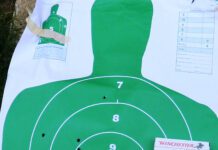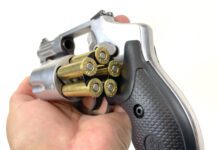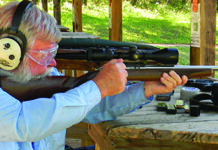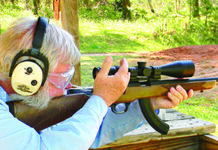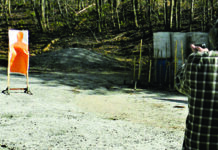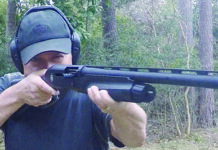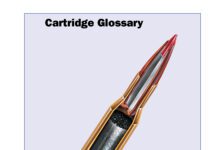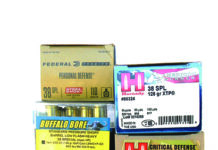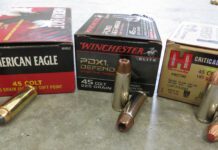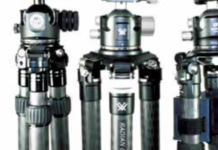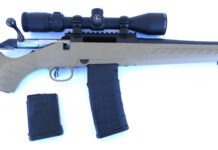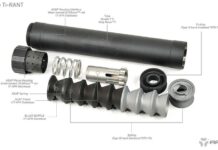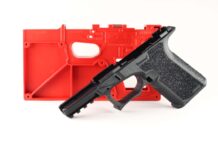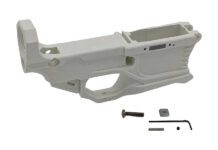CrossBreed Holsters Has New Fit for Springfield’s XDs 9mm
Now Shipping: PMAG 40 Gen M3 from Magpul
New Bushnell ImageView BinocularCaptures HD Images, Video
Walther PK380 With Laser No. WAP40010 380 ACP
We recently tested guns with factory-fitted lasersights in the February 2013 issue. Here's an excerpt of that report.
Lasersights on handguns are common today. Scan the used-handgun case at a gun shop, and more than likely you'll find a rig that the former owner customized with a laser sight. In the new-pistol case, you will also see factory-fitted laser sights on handguns.
Wilson Combat Announces T.R.I.M. — Tactical Rail Interface
Koenig Wins Fourth Consecutive Overall Bianchi Title
Laser Rangefinders Under $200: Simmons, Nikon, and Redfield
It does not matter what type of implement you use - modern firearm, muzzleloader, or bow - determining distance to your target is critical. For a primitive-weapons hunter, it means waiting until the beast comes into range. For a user of modern firearms, it might mean dialing in exactly the right amount of hold-over - or passing up a shot - on a trophy thats at the edge of your ability to shoot accurately. One of the fastest, easiest to use, and affordable means of accurately gauging distance to various targets is a laser rangefinder. Laser rangefinders are basically a monocular that send out a pulsating laser beam that bounces off a target back to the unit and provides an instantaneous readout in yards or meters. The laser is similar technology to that used in autofocus cameras.
The price of rangefinders is directly attributed to the quality of electronics of the rangefinder. More expensive rangefinders have lasers with less beam divergence, which is when the laser-beam diameter begins to spread out over distance. Instead of a tight, narrow beam, the beam becomes wider, like a cone, at the target end of the beam. The more beam divergence, the less accurate the distance reading. Those more expensive rangefinders also have more added features like a ballistic calculator, modes for use in rain or snow, different reticle choices, can range at farther distances, to name a few.
We recently tested three affordable laser rangefinders with similar maximum distances and features.
Laser Rangefinders Under $200: Simmons, Nikon, and Redfield
It does not matter what type of implement you use - modern firearm, muzzleloader, or bow - determining distance to your target is critical. For a primitive-weapons hunter, it means waiting until the beast comes into range. For a user of modern firearms, it might mean dialing in exactly the right amount of hold-over - or passing up a shot - on a trophy thats at the edge of your ability to shoot accurately. One of the fastest, easiest to use, and affordable means of accurately gauging distance to various targets is a laser rangefinder. Laser rangefinders are basically a monocular that send out a pulsating laser beam that bounces off a target back to the unit and provides an instantaneous readout in yards or meters. The laser is similar technology to that used in autofocus cameras.
The price of rangefinders is directly attributed to the quality of electronics of the rangefinder. More expensive rangefinders have lasers with less beam divergence, which is when the laser-beam diameter begins to spread out over distance. Instead of a tight, narrow beam, the beam becomes wider, like a cone, at the target end of the beam. The more beam divergence, the less accurate the distance reading. Those more expensive rangefinders also have more added features like a ballistic calculator, modes for use in rain or snow, different reticle choices, can range at farther distances, to name a few.
We recently tested three affordable laser rangefinders with similar maximum distances and features.
Upgrading the Ruger Mini-14 the Brownells Way, Part I and Part II
MechTech Systems Carbine Conversion Unit for Glock 9mm
This neat unit gives excellent performance. It is a good option for the Glock fan wishing to dedicate one of his pistols to the carbine concept. Commonality of trigger action is a strong point, as well as commonality with magazines. On the basis of affordability, it is a good choice, if you already have the Glock pistol on hand.


